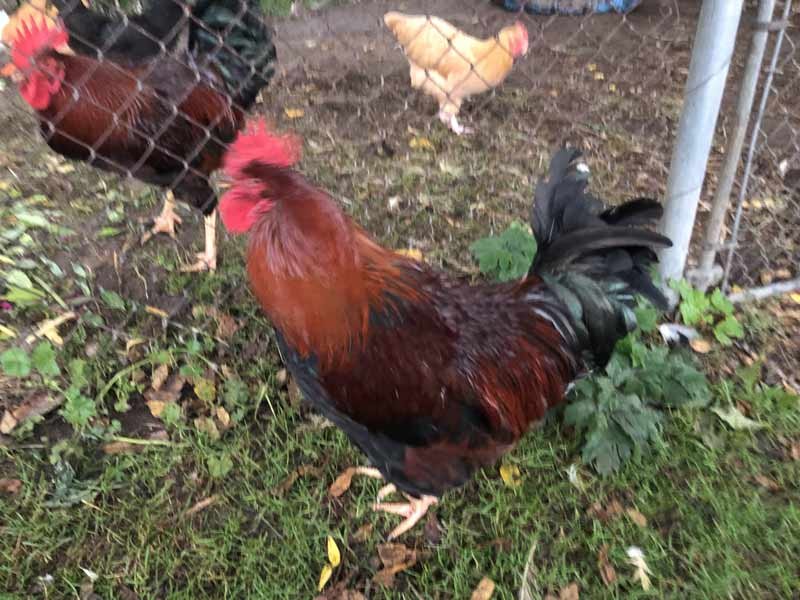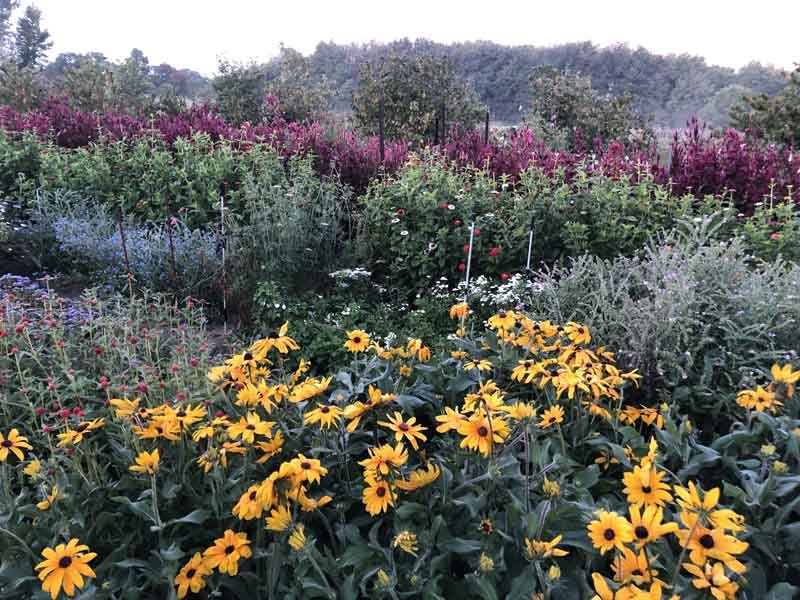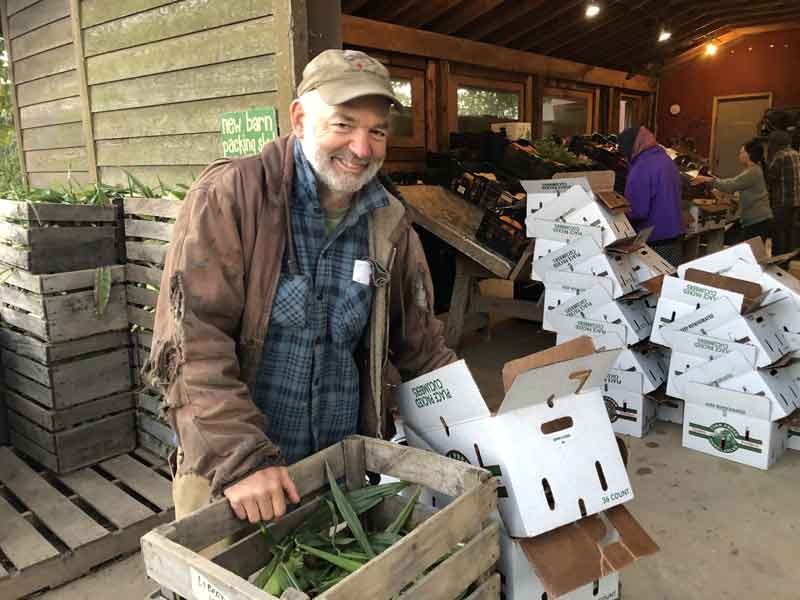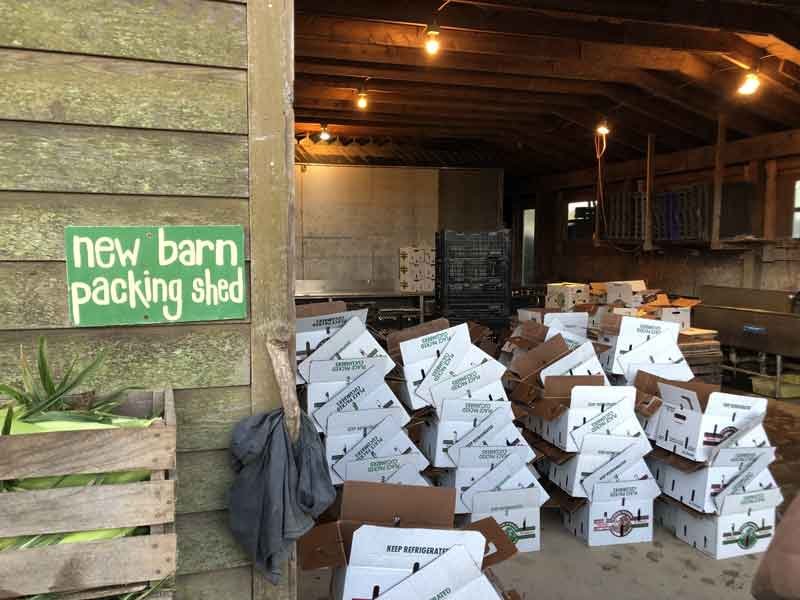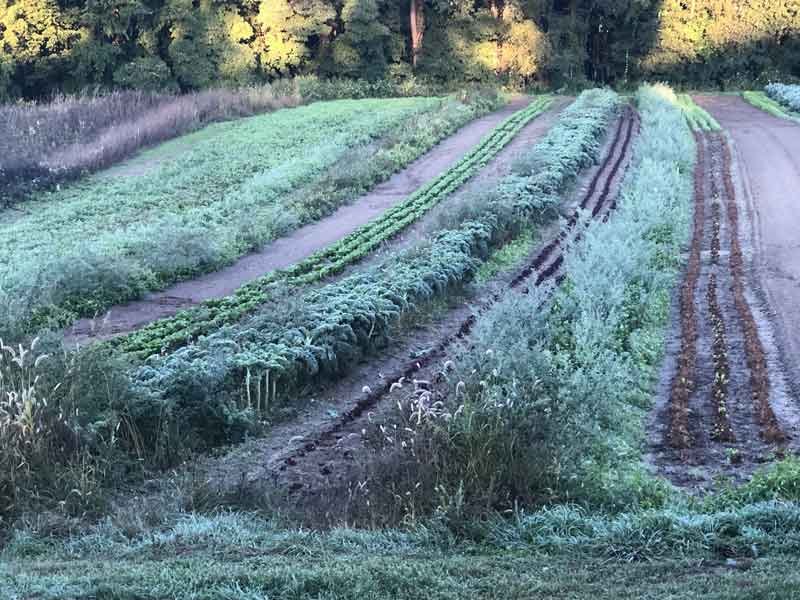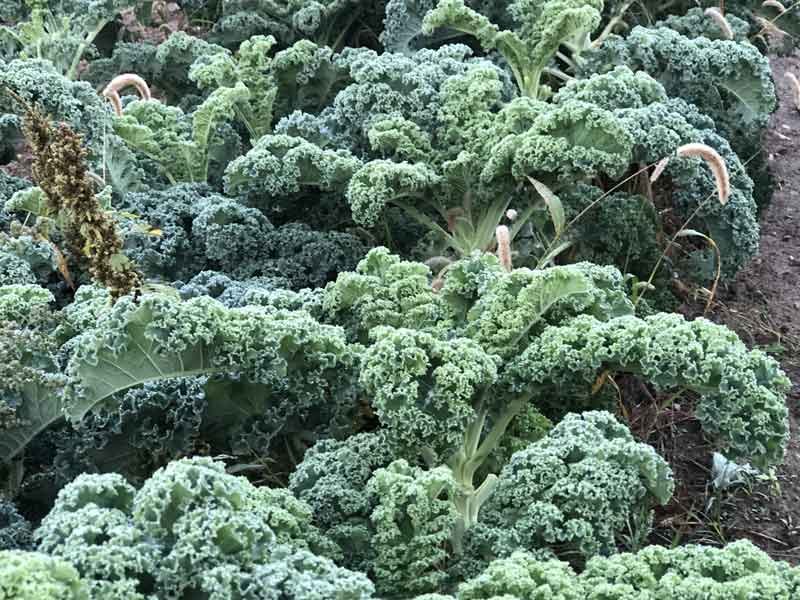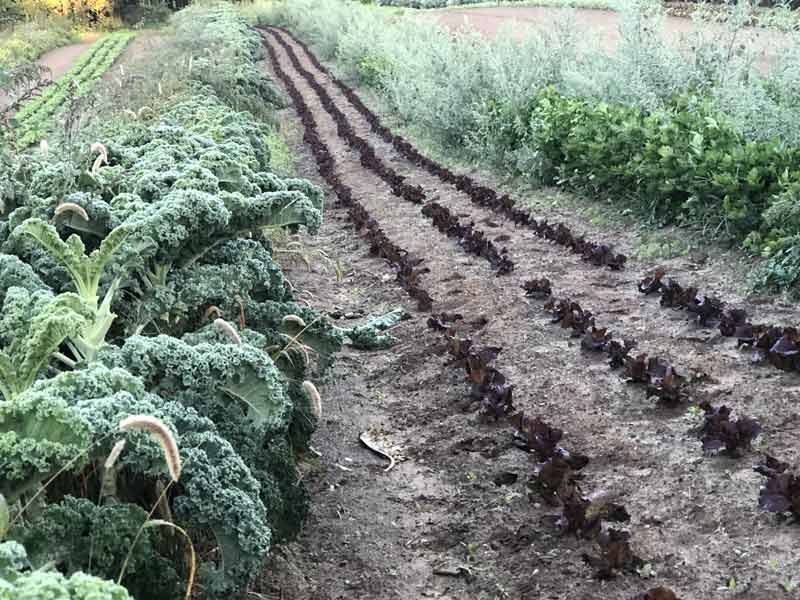Focus on Farmers
Tantre Farm: Come On In!
There’s something special going on at the white farmhouse on the hill
When you turn left off of old US-12 onto Hayes road in farm country outside of Chelsea, Michigan, the road eventually winds off to your left and up a hill. Right at the next bend is Tantre Farm. When you get out and walk up toward the 100-year-old white farmhouse you’ll find out that you’re about to discover that this bend in the road will take you in a new direction in your thinking about community and agriculture.
Tantre was started by Richard Andres in 1993. He was there solo for a few years until he met his wife, Deb Lentz, who joined him, having grown up on a beef farm in Minnesota and taught elementary school for a number of years.
It’s known by some and hopefully soon, by you, as a place that cultivates wonderful food, particularly vegetables, and strong connections between people on the farm and with the greater community.
A few of the strands woven into the fabric of Tantre that make it what it is come out as soon as you step onto the farm and start talking to Richard.
Strand 1: Connection to the land. There’s roughly 140 acres of land, much of it woods with rolling hills and about 20% of it is flat enough to grow vegetables. Some chickens lay eggs and peck around for fun and a few cows graze in the open fields.
Richard describes how the farm came into being.
“It really started for me when I was a kid…my great grandpa came from a fishing village in Poland to Detroit in the late 1800s. Back then he was able to walk out his door down to the river and fish and walk back. He walked everywhere and he ate brown toast and lard every morning and smoked a pipe, but he had a lot of friends and he lived well into his ‘90s. So, when I think of somebody local, I think of him.”
Then there were the strawberries. “When I was young, six years old, I went strawberry picking with my grandmother and my mother, and I couldn't believe that strawberries were on the ground and that you could just pick them up. So I started running around picking strawberries and putting them in my mouth!”
Fast forward to the mid-‘70s. “It was ‘back to the land’ time so my family moved to a small farm, and we grew, you guessed it, strawberries. I also worked for a local farmer down the road. They had 1500 acres. I'd ride my bike to pick sweet corn for Farmer Jacks.”
As he got older, Richard began to think about how he could get himself on the land. “You know my first interest was because of that romance, but also because we went through a time when there was a gas shortage. The oil embargo in the mid-‘70s made us question, ‘Where do we get our resources and how do we find renewable resources.’ Kind of what we're facing now except now with global climate change we're really facing other limits to the use of fossil fuels.”
Then came the organic movement and CSAs, Community Supported Agriculture. “These came together, and I wanted to see if there was a way to farm without negative impact on the environment while building relationships that would make this effort sustainable. So that’s what was on my mind when I bought the farm in 1993.”
And it’s been going for thirty years. “Of course, we grow everything outside our back door which is sort of harkening back to my great grandfather’s living in this place. He walked to the river and walked home with fish, and we walk out our back door and we walk in with vegetables that we cook, and we eat.”
Strand 2: Diversity. Tantre looks to grow a wide variety of ecologically grown garden produce that people are interested in and like to eat (or are open to trying and liking!) and make it available throughout the year.
“We harvest and grow food year-round, so the vision is how we become local to our place. In the spring we have the spring greens and vegetables, in the summer the fruiting vegetables, and in the winter the storage vegetables. The fall is similar to the spring. That diversity makes for a healthier business for us because we’re not just dependent on one crop and we can offer a variety to our customers so they can try different foods at different times.”
Richard wants to extend the diversity by innovating to include not only annual plants but perennials. “One of the visionary organizations in North America is the Land Institute that's run by Wes Jackson. He’s developing perennial green plants, so rather than having to plant wheat every year you just plant it once every ten years. It has deep root systems that build soil and sequester carbon and can withstand a drought or a flood and still come back and get production without a lot of petroleum inputs. He has a 50-year farm plan which is a very simple template--we need to grow 80% of what we grow as perennials and 20% as annuals. That’s the dream to move to longer term.”
Strand 3: Community. Community is big at Tantre, both on the farm and beyond its 140 acres. The farm employs its primary staff from spring to late Fall. There’s been a long-standing internship program with well over two hundred interns at this point having learned about the land, about farming and about what it means to pull together to overcome obstacles--including personalities--to do what the farm needs done to be sustainable. Many deep friendships have been formed here with hands in the soil. And a number of new farmers have launched based on their experience at Tantre. Says Richard, “We work together—with our abilities and disabilities—to make food and generate production and serve the local community and then also to try to do this in a way that's organic and respectful of the ecology.”
The day starts early at Tantre.
“We get up at 5:30, we have a short work meeting from 6:00 to 7:00 every morning and sit down with a whole group of people. It could be six people in the winter, it could be 20 people in the summer, and we eat breakfast and talk over some of the concerns of the day. Like how many crates of Kabocha squash do we have or how many crates of butternut can we get out before the frost, and who's going to work on what project?”
They work from seven until noon and then have a farm lunch where a crew member is designated as the cook for the farm. After the hour break for the meal, they work until five. Outside, they separate into different harvesting and packing process groups. There’s a packaging shed where crew members pack CSA shares, wholesale orders, and market orders.
“Then there's all the jobs to care for the vegetables—so trellising and stringing, planting crops, weeding. In the winter there's mushroom making, taking care of cows, cutting firewood, and doing building maintenance and vehicle maintenance.”
To keep the farm going requires the collaboration of other locals. “A farm needs a lot of material support. You need land, fertility, a source of compost, water, equipment, tractors, root cellars and green houses. So, these are all potentially relationships that you have that you can share with other farmers and they with you in this culture. And so just having those interdependencies makes a good friendship.”*
Community extends beyond the farm in how the produce is sold. Tantre was one of the earliest CSA farms in the area. For those who have a share, they receive a box full of fresh produce each week—usually picked a day or two before. Customers can also come to three farmers markets to buy fresh produce as well as enjoy the produce at local restaurants and caterers.
In Chelsea, Tantre is one of the producer’s that offer their food at Agricole Richard calls it the “local trading post.” “It’s a place where farmers and local artisans can offer their products and get a fair return. At the same time, you can spend some time with friends, share stories and be part of the local happenings. If you’re stimulating the local economy, you’re cultivating the local community. When neighbors are sharing their skills and dreams with one another and helping each other go forward, you know you belong.”
Richard notes that Robin Hills Farm contributes to this overall sense of community in a special way. “A lot of people don’t feel a connection to the natural environment. They don’t know where to go exactly. How do they get outside and connect? Robin Hills Farm is a great place to make that connection. Beautiful woods, rolling hills and trails, plus all of the buildings. It’s like a little campus in nature. And when you arrive you feel the hospitality.”
In addition to doing much of the organizational work on the farm, Richard’s wife Deb is committed to making Tantre a place for learning. She hosts educational outings for kids here at the farm and sets up various stations so they can get a hands-on experience. She likes to point out to the kids that “every plant has roots, a stalk and a flower or fruit. You’ve got to have strong roots down in the soil to grow a strong stalk so it can support and nurture the fruit.”
Adds Richard, “That’s what we’re trying to do really. Put our hands and feet deep into the soil so we can grow a strong stalk of community that bears good fruit not just for us, but for future generations.”
*This is a comment from the TRUIC video on the Tantre site. Take a look for more.


